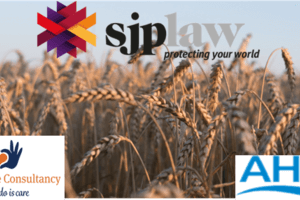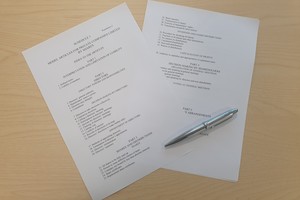From Monday 14 September, you must not meet in groups of more than 6 when meeting with people outside your household. As of Monday 14 September, this will be law and the police will have the powers to enforce these legal limits including issuing fines.
There are some exceptions where there can be groups of more than 6, the workplace is one of these exceptions as long as COVID-19 secure guidelines and risk assessments are in place, providing a safe working environment for employees.
For further details on the updated guidance relating to social distancing and contact, please read this link.
From 18 September, it will be mandatory for certain businesses, including hospitality and tourism and leisure sectors, close contact services, local authority run services and places of worship, to have a system in place to collect NHS Track and Trace data, and to ask customers to provide these details. Businesses will be required to retain these details for 21 days and will need to make sure that the gatherings limit of 6 is not exceeded.
In the hospitality sector, pubs, bars and restaurants will be required to refuse entry or service to customers who refuse to provide NHS Track and Trace data.
For more information and government guidance related to how to make your workplace Covid secure for customers, visitors and workers, with guidelines specific to each working sector, please read this link.
Furlough and claim periods
Recently, we have had questions raised by our clients in relation to the Furlough scheme and the relationship between the claim period and pay period when reclaiming wages from HMRC for Furloughed and Flexible Furloughed employees. We have outlined some guidance below that may help clarify a few points.
From 1 September 2020, government will pay 70% of wages to a maximum cap of £2187.50 for the hours the employee is on furlough. Employers will need to top-up employees wages to ensure they receive 80% of their salaries (up to £2500).
Employers will pay employers national insurance contributions and employers pensions contributions on furloughed employees pay.
If you have employees who are flexibly furloughed you will pay them their normal rate of pay for all hours they physically work and their furlough rate of pay (80%) for all hours they are furloughed.
A claim period when reclaiming on the furlough scheme, is made up of the days you are claiming a grant for. Claim periods must start and end within the same month. This may mean that your claim period is different to your pay period.
If your pay period includes days in more than one month, you’ll need to submit separate claims covering the days that fall into each month. You should calculate each of those claims separately. Claim periods cannot overlap, so you will need to make sure you include all of the employees you want to claim for in each claim you make.
If your employee is flexibly furloughed, you will need to work out your employee’s usual hours, record the actual hours they work as well as their furloughed hours for each claim period.
We have laid out an example below for the claim period of 1 September to 30 September, where an employee is flexibly furloughed for the claim period 1-30 September, the following process would apply;
- Identify the claim period (1 September 2020 - 30 September 2020);
- Is the employee on a fixed or variable hours contract? (Fixed- 40 hours contract);
- Identify the employee’s reference salary per month (£5000- this is their normal salary each month before Covid);
- Calculate the usual hours worked in the claim period, these would be the hours worked plus the hours not worked within that claim period;
(The number of hours contracted to work each week = 40;
Divided by the number of calendar days in working pattern, including non-working days = 7;
Multiplied by the number of days in the pay period the employer is claiming for = 30 for September;
Rounds up to the next whole number (if the outcome is not a whole number);
(40/7) x 30 = 171.42 (rounded up = 172); - The relevant cap for this claim period is £2500.00 as it is a full month claim period (for anything that is not 1 week claim period or 1 month claim period, please let us know as a further calculation is required to work out the relevant cap for the claim period);
- Calculate 80% of reference salary (from step 3) (= £4000);
- The minimum furlough pay for the claim period is £2500 (the lower of £2500 and £4000);
- For September claim period, in this example, this employee has worked 88 hours (22 working days x 4 hours a day);
- Calculate the amount of furlough pay to be recovered from CJRS; £2500 (the sum from step 7) x 84 (number of furloughed hours) divided by 172 (number of usual hours, step 4) = £1220.93;
- Divide the sum at step 9 by 80 and multiply by 70. This sum will be capped at £2,187.50 for a month-long claim period (reduced proportionately to reflect a shorter claim period). = £1,068.31, 70%, can be claimed from HMRC- CJRS scheme;
- Divide the sum at step 9 by 80 and multiply by 10. This sum will be capped at £312.50 for a month-long claim period (reduced proportionately to reflect a shorter claim period). = £152.62, 10%, is payable by the employer;
- Work out the employer National Insurance Contributions on furlough pay;
- Calculate the employer pension contributions.
The employer will need to pay the wages for the hours worked plus the employer NICs and employer pension contributions due on employees' furlough pay (steps 12 and 13) and the proportion of furlough pay calculated in step 11. HMRC will pay the proportion of furlough pay calculated in step 10.
If you find your claim period is different to this example, have any overlaps between pay periods and claim periods or would like general support with this calculation, please let us know.
This advice is based upon the Governmental and ACAS guidance as at the time of this email.
If you have any questions on the employment guidance outlined above, or have any business related queries you would like our support with, then please feel free to contact us.



















